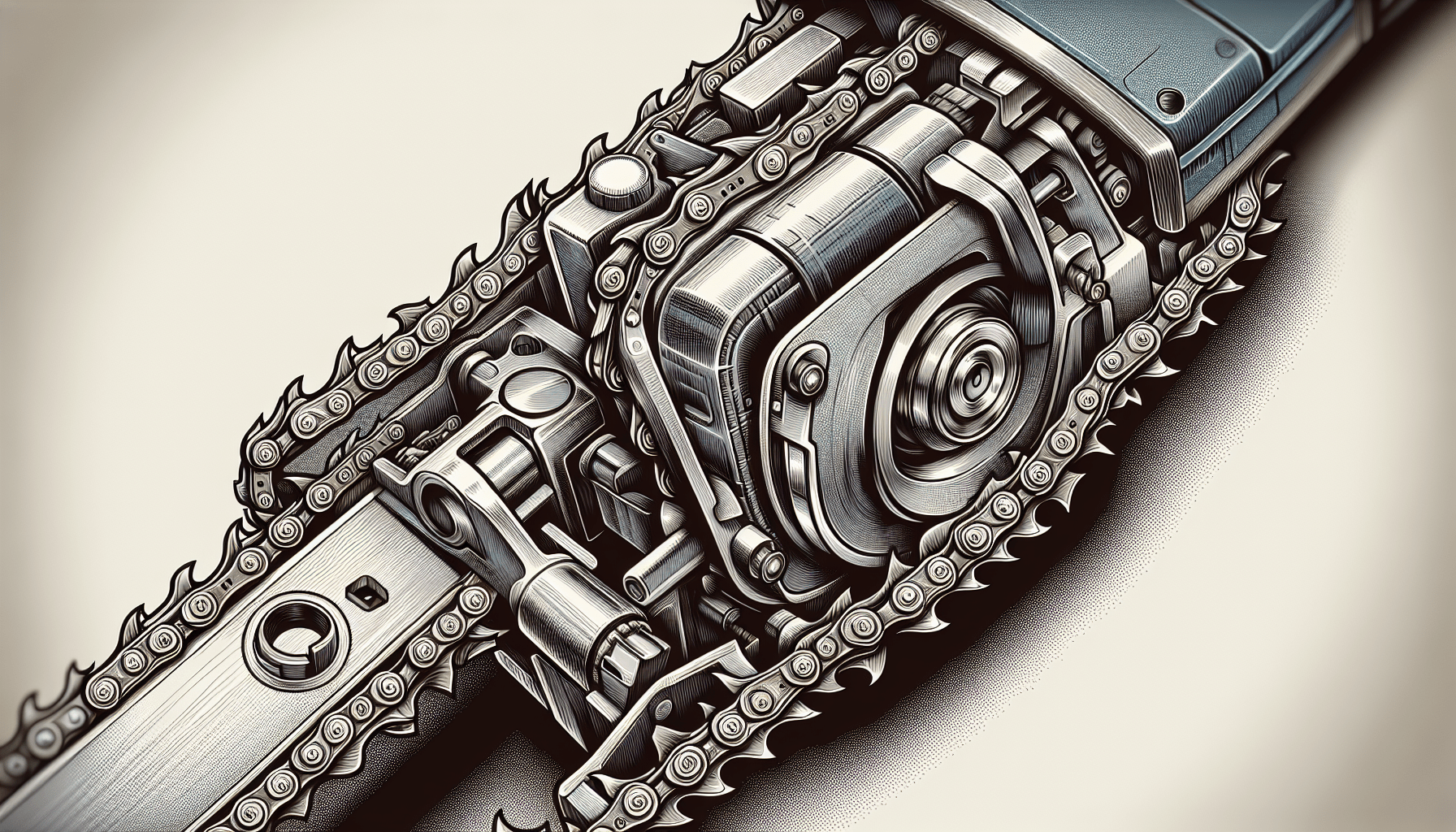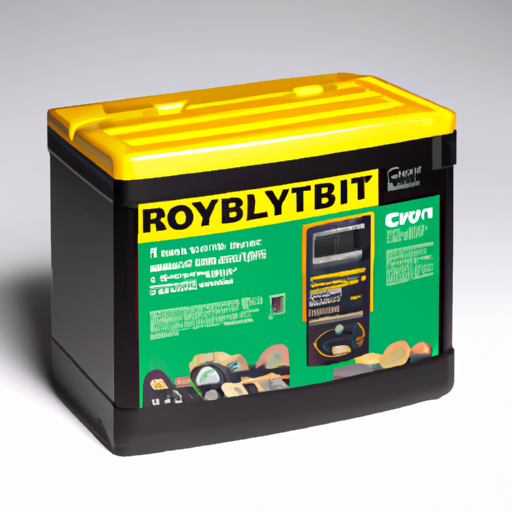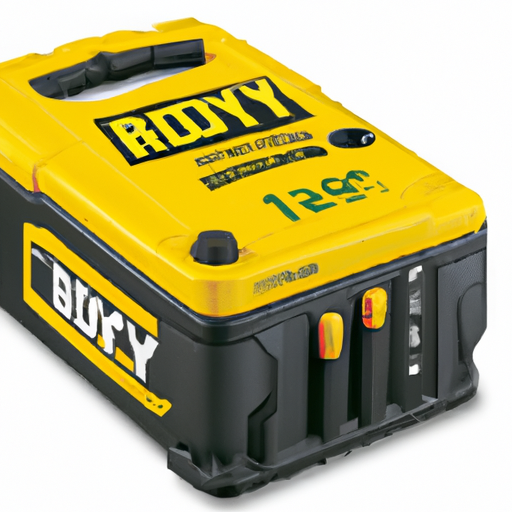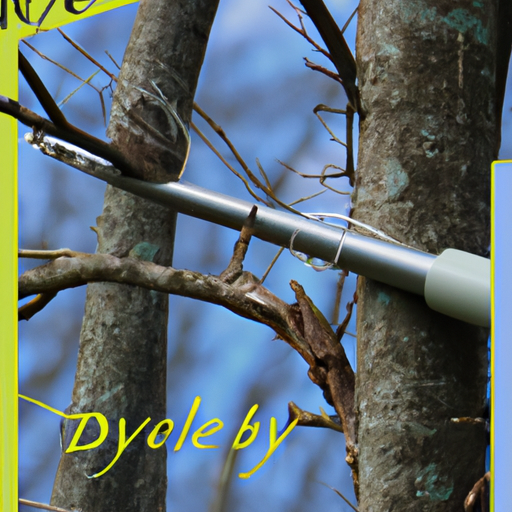Imagine a world where you could handle a chainsaw without fear – where the mere thought of slicing through thick tree trunks sends a thrill of excitement rather than a shiver down your spine. Is this a distant dream or an attainable reality? The question lingers in the minds of many, searching for reassurance that a safe chainsaw exists. In a world where accidents are unfortunately all too common, we navigate through the intricacies of this controversial topic to determine the answer to the burning question: is there such a thing as a safe chainsaw?
Choosing a Safe Chainsaw
Electric or Gas-Powered?
When it comes to choosing a chainsaw, one of the first decisions you’ll need to make is whether to go for an electric or a gas-powered model. Electric chainsaws are typically quieter and easier to start, making them a popular choice for beginners. They also require less maintenance and emit zero emissions, which makes them a more environmentally friendly option. On the other hand, gas-powered chainsaws offer more power and mobility, making them better suited for larger and more demanding projects.
Safety Features to Look for
No matter which type of chainsaw you choose, it’s important to pay attention to the safety features it offers. Look for chainsaws that have a chain brake, which can quickly stop the chain from rotating in case of kickback. Additionally, a handguard and a front guard tip can provide extra protection for your hands and reduce the risk of injury. Some models also come with anti-vibration features, which can help reduce fatigue during prolonged use.
Size and Weight
The size and weight of a chainsaw can greatly impact its usability and safety. Choose a chainsaw that you can comfortably handle and control, as using a chainsaw that is too heavy or too large for you can increase the risk of accidents. Consider the types of projects you’ll be undertaking and choose a chainsaw that strikes the right balance between power and maneuverability.
Ergonomics and User Comfort
Since you’ll likely be using a chainsaw for extended periods of time, it’s important to prioritize ergonomics and user comfort. Look for chainsaws with adjustable handles and ergonomic designs that fit comfortably in your hands. This will help reduce fatigue and strain on your body, allowing you to work more safely and efficiently. Additionally, chainsaws with vibration-reducing features can further enhance user comfort and minimize the risk of long-term injuries.
Safety Equipment for Chainsaw Use
Protective Clothing
When operating a chainsaw, it’s crucial to protect yourself with the appropriate clothing. Wear a long-sleeved shirt, sturdy pants, and boots with protective toe caps. Choose clothing made from durable and cut-resistant materials, such as Kevlar or nylon, to minimize the risk of injury from accidental contact with the chainsaw’s chain. It is also advisable to wear chaps or leggings specifically designed for chainsaw use, as they provide an additional layer of protection for your legs.
Protective Eyewear
Safety goggles or a face shield should always be worn when using a chainsaw to protect your eyes from flying debris, wood chips, or sawdust. Opt for goggles or a face shield that provide a snug fit and have impact-resistant lenses. Never compromise on eye protection, as even small particles can cause significant eye injuries.
Hearing Protection
Chainsaws can generate a significant amount of noise that can potentially damage your hearing over time. To protect your ears, wear earplugs or earmuffs specifically designed to block out high levels of noise. Make sure the hearing protection equipment fits well and offers the necessary level of noise reduction.
Safety Boots or Shoes
Your footwear plays a crucial role in keeping you safe while using a chainsaw. Invest in a pair of sturdy and well-fitting safety boots or shoes with non-slip soles and steel toe caps. This will protect your feet from falling objects, accidental contact with the chainsaw, or slipping on slippery surfaces.
Gloves
To protect your hands from cuts, scratches, and vibrations, it is essential to wear gloves while operating a chainsaw. Choose gloves that are specifically designed for chainsaw use and provide a good grip. Look for gloves with cut-resistant material and padding to reduce the risk of injuries.
Safe Handling and Operating Practices
Proper Training and Certification
Before using a chainsaw, it is essential to undergo proper training and certification. Enroll in a chainsaw safety course offered by reputable organizations or hire a professional instructor. Learning the correct techniques and safety protocols will significantly reduce the risk of accidents and ensure that you are equipped with the necessary skills to operate a chainsaw safely.
Maintaining a Safe Work Area
Creating and maintaining a safe work area is crucial for safe chainsaw operation. Clear away any obstacles, debris, or tripping hazards before starting your work. Ensure that there is ample space for maneuvering, and never operate a chainsaw near others unless they are also properly trained and wearing the necessary protective equipment.
Checking the Chainsaw Before Use
Before starting your chainsaw, thoroughly inspect it for any signs of damage or wear. Check the chain tension, guide bar, and sprocket to ensure they are in good condition. Always make sure the chain is sharp and properly lubricated. Check that all safety features, such as the chain brake, handguard, and throttle lockout, are functioning correctly. Regular maintenance and inspection are essential for safe chainsaw operation.
Correct Grip and Positioning
Maintaining the correct grip and positioning of the chainsaw is vital for your safety. Hold the handles with both hands, ensuring a firm grip. Use your thumb to wrap around the handle, allowing for better control and reducing the risk of slippage. Keep your feet firmly planted on the ground and maintain a stable stance while operating the chainsaw. Avoid overreaching or working in awkward positions that may compromise your stability and control.
Avoiding Kickback
Kickback is one of the most dangerous situations that can occur while using a chainsaw. It happens when the tip of the chainsaw’s guide bar makes contact with an object, causing the saw to jerk back toward the operator. To avoid kickback, always cut with the bottom part of the chainsaw’s guide bar and chain. Maintain a secure grip and be cautious of the potential for kickback when cutting through dense or knotty wood.
Operating the Chainsaw at a Safe RPM
Using a chainsaw at the correct revolutions per minute (RPM) is essential for safe operation. Refer to the manufacturer’s instructions to determine the recommended RPM for your specific chainsaw model. Operating the chainsaw at too high or too low of an RPM can lead to decreased control, increased risk of kickback, and excessive wear on the chain and guide bar.
Maintenance and Care for a Safe Chainsaw
Regular Cleaning and Inspection
To ensure the safe operation of your chainsaw, it’s important to regularly clean and inspect it. Clean the chainsaw after each use to remove debris and sawdust that may accumulate. Inspect the chain, bar, sprocket, and other components for any signs of wear or damage. Replace any worn or damaged parts promptly to maintain the chainsaw’s safety and performance.
Sharpening the Chain
A sharp chain is not only more efficient but also safer to use. Dull chains can lead to increased kickback and can be more difficult to control. Regularly inspect the chain and sharpen it as needed using a chainsaw file or a sharpening tool specifically designed for chainsaw chains. Follow the manufacturer’s instructions for proper sharpening techniques.
Proper Fuel Mix
For gas-powered chainsaws, it’s essential to use the proper fuel mix to ensure safe and efficient operation. Use a high-quality two-stroke engine oil formulated specifically for chainsaws. Improper fuel mix ratios can lead to engine damage and potentially dangerous malfunctions. Always follow the manufacturer’s recommendations for the correct fuel mix ratio for your chainsaw.
Regular Maintenance and Tune-Ups
Regular maintenance and tune-ups are crucial for keeping your chainsaw in safe working condition. This includes inspecting and cleaning the air filter regularly, replacing spark plugs when necessary, and checking the fuel system for any leaks or blockages. Consult the chainsaw’s manual for the recommended maintenance schedule and follow it diligently.
Storing the Chainsaw Safely
Proper storage is essential for maintaining the safety of your chainsaw when not in use. Store it in a secure and dry location, away from children and pets. Use a chainsaw storage case or a designated storage area to protect it from dust, moisture, and potential damage. Make sure the chainsaw is fully cooled down before storing it. Additionally, remove the chain and guide bar for long-term storage to reduce the risk of accidental contact.
Safe Chainsaw Use in Different Environments
Clearing Trees and Vegetation
When clearing trees and dense vegetation, it’s important to approach the task with caution. Assess the area for potential hazards, such as unstable trees or overhead power lines. Plan your cuts carefully, ensuring the tree or vegetation will fall in a safe direction. Use appropriate cutting techniques, such as notching and backcutting, to control the direction of fall and minimize the risk of the tree or branches snapping back.
Pruning Branches
Pruning branches can help maintain the health and aesthetics of trees, but it can also be a hazardous task. Before pruning, identify any potential hazards, such as dead or cracked branches, power lines, or nearby structures. Use proper cutting techniques, such as making clean cuts at the branch collar, to minimize damage and promote healing. Consider using a pole saw or other specialized pruning tools for higher branches to maintain a safe distance from the chainsaw’s cutting zone.
Cutting Firewood
When cutting firewood, safety should be the top priority. Choose a stable and level work surface, ensuring that the logs are properly secured before cutting. Utilize a sawhorse or a chainsaw buddy to hold the wood in place, providing a stable and safe cutting platform. Make sure the area is clear of any debris or objects that may interfere with cutting or endanger your safety.
Construction and Demolition Work
Chainsaws are often used in construction and demolition work, but these environments can pose additional safety challenges. Always assess the work area for potential hazards, such as nails, screws, or other metal objects that the chainsaw’s chain may come into contact with. Take extra precautions when cutting through materials like metal, concrete, or masonry, as they can cause the chain to dull or break. Utilize appropriate personal protective equipment and follow safe cutting techniques to minimize the risk of accidents.
Additional Safety Measures
Using a Chainsaw Buddy or Sawhorse
Using a chainsaw buddy or a sawhorse can greatly enhance safety while operating a chainsaw. A chainsaw buddy is a tool that securely holds the wood in place, allowing for safer and more controlled cutting. Sawhorses, on the other hand, provide a stable and elevated platform for cutting logs or branches, reducing the risk of the chainsaw coming into contact with the ground or other objects.
Operating a Chainsaw with Two People
In certain situations, it may be necessary or beneficial to operate a chainsaw with the assistance of another person. This is especially true for larger or more complex projects where an extra set of hands can enhance safety and productivity. However, it is crucial that both individuals involved have the necessary training and wear the appropriate safety equipment. Communication and coordination are also essential to prevent accidents.
Avoiding Overreach
Overreaching while using a chainsaw can lead to loss of balance and control, increasing the risk of accidents. Always maintain a stable stance and position yourself in such a way that you can reach the cutting area comfortably without straining or stretching. If the work area is out of reach, reposition yourself or use appropriate tools to bring the work closer to you.
Maintaining Focus and Avoiding Distractions
Operating a chainsaw requires your full attention and concentration. Avoid distractions, such as conversations, phone calls, or other activities that may divert your attention from the task at hand. Stay focused on the cutting process and be aware of your surroundings. Remember, a momentary lapse in concentration can have severe consequences when using a chainsaw.
Common Chainsaw Safety Hazards
Kickback
Kickback is one of the most common and dangerous hazards associated with chainsaw use. It occurs when the tip of the chainsaw’s guide bar makes contact with an object, causing the saw to jerk back toward the operator. To minimize the risk of kickback, always use proper cutting techniques, maintain a secure grip, and be cautious when cutting through dense or knotty wood.
Chain Brake Failure
Chain brake failure can occur if the chainsaw’s chain brake mechanism is not functioning properly. Regularly inspect and test the chain brake to ensure it engages and stops the chain immediately in case of kickback. If you suspect any issues with the chain brake, discontinue using the chainsaw and have it repaired by a professional.
Chain Slippage
Chain slippage can happen if the chainsaw’s chain is not properly tensioned or if the guide bar is worn or damaged. This can result in the chain coming off the guide bar during operation, posing a significant safety risk. Always check the chain tension and guide bar before using the chainsaw and adjust as necessary. Replace any worn or damaged parts promptly.
Fuel Ignition and Fire Hazards
Gas-powered chainsaws carry the risk of fuel ignition and fire hazards. Maintain a clean and well-ventilated fueling area and avoid smoking or open flames when handling or refueling the chainsaw. Store fuel in a safe and designated container away from ignition sources or flammable materials. Regularly inspect the fuel system for any leaks and address them immediately.
Limb and Hand Injuries
The chainsaw’s chain and cutting zone pose a significant risk of limb and hand injuries if proper safety precautions are not followed. Always maintain a secure grip, prioritize correct cutting techniques, and avoid placing any body part directly in the path of the chain. Be mindful of your surroundings, especially when cutting in confined or awkward spaces.
Hearing and Respiratory Problems
Chainsaws produce high levels of noise, which can lead to hearing damage if proper hearing protection is not worn. Additionally, operating a chainsaw generates a considerable amount of sawdust and debris, posing respiratory risks. Always wear hearing protection and a dust mask to protect your ears and lungs from potential harm.
Safe Chainsaw Use for Beginners
Seeking Professional Instruction
For beginner chainsaw users, seeking professional instruction is highly recommended. Enroll in a chainsaw safety course or hire a professional instructor who can guide you through the basics and teach you the necessary skills and techniques. Proper instruction will equip you with the knowledge and confidence to operate a chainsaw safely.
Starting with Smaller Chainsaws
If you’re new to chainsaw operation, it’s best to start with smaller and less powerful models. Smaller chainsaws are generally easier to handle and control, allowing you to become comfortable with the basic operation and techniques. As you gain more experience and confidence, you can gradually move on to larger and more powerful chainsaws.
Practicing on Safe and Small Projects
Before taking on larger or more complex projects, it’s advisable to practice on safe and small projects. This will allow you to hone your skills and familiarize yourself with the chainsaw’s operation in a controlled and less demanding environment. Start with simple tasks, such as cutting small branches or pruning shrubs and gradually progress to more challenging projects.
When to Hire a Professional
Complex or High-Risk Projects
There are certain projects that are best left to professionals with specialized training and experience. Complex or high-risk projects, such as tree removal near power lines or cutting large and heavily branched trees, should be handled by professionals who can safely assess the situation, utilize proper equipment, and employ advanced cutting techniques to minimize risks.
Lack of Experience or Training
If you lack experience or proper training in operating a chainsaw, it’s important to recognize your limitations. Operating a chainsaw without the necessary skills and knowledge can lead to accidents and injuries. In such cases, it is best to hire a professional who can complete the job safely and efficiently.
Working in Hazardous Environments
Some environments present additional hazards that require specialized knowledge and safety precautions. Working in hazardous environments, such as near fuel sources, unstable structures, or in harsh weather conditions, should be left to professionals who have the expertise and equipment to handle such situations safely.
Conclusion
While no tool can be completely risk-free, choosing a safe chainsaw and following proper safety practices can greatly minimize the risks associated with chainsaw operation. Consider factors such as the type of chainsaw, safety features, size, weight, and ergonomics when selecting a chainsaw. Always wear the appropriate protective clothing and equipment, maintain a safe work area, and handle the chainsaw with care. Regularly inspect and maintain your chainsaw to ensure its safe operation. Lastly, know your limitations, seek professional help when needed, and prioritize your safety and the safety of others at all times. With the right precautions and practices, you can enjoy the benefits of using a chainsaw while staying safe and protected.



